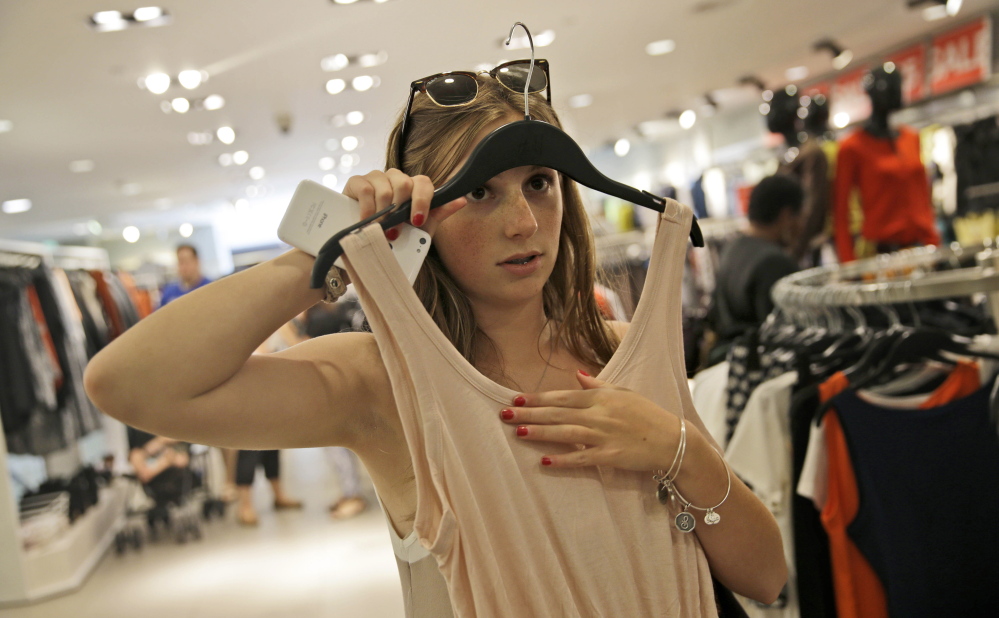GARDEN CITY, N.Y. — Giulia Pugliese is a typical teenager. She likes to look good, and she’s particular about what she wears.
But when The Associated Press followed the 15-year-old from Long Island on a recent back-to-school shopping trip with friends, she left a Nike store empty-handed – even though Nike is one of her favorites. The reason?
“I buy on sale because it’s stupid to buy a pair of shorts for $60,” said Pugliese, who instead looks for the “Swoosh” logo in discount stores like Marshalls.
Teens are shopping like their parents during the back-to-school season, and that’s putting a lot of pressure on retailers to change the way they market to them. Gone are the spending sprees, starting weeks before school bells ring. More teens are thrifty nowadays, a habit picked up from their recession-scarred parents.
Today’s kids recycle more clothes from the previous school year, mixing and matching the old with the new for different looks. They also shop year-round for things they need so they’re spending less money this time of year.
When they do buy, they’re less likely to get anything that’s not on sale. And the number of kids who’ll reuse last year’s items rose to 39 percent from 26 percent between 2011 and 2015, says a Deloitte LLP poll of 1,000 parents.
And when teens shop, they’re spending less. Families with school-age kids, on average, are expected to spend $630.36 this year, according to a survey of 6,500 by the National Retail Federation. That’s down 6 percent from last year and results have registered declines for four out of the past seven years.
Overall, back-to-school spending this year should hit $42.5 billion, up 2.1 percent from the previous year, according to The Retail Economist, a research firm. That’s much lower than the 5 to 6 percent average gains typically seen in a healthy economy.
Teens’ behavior is an extension of how their parents learned to shop since 2008 when retailers pushed discounts to entice people to buy during the downturn. That helped lure shoppers, but it also got them addicted to deals. The shift made it difficult for stores to make money because discounts cut into profits.
Such behavior has cut into sales from July through September, the second biggest shopping period of the year behind the winter holidays. Sales during that period were 24.9 percent of total sales annually last year, down from 25.8 percent in 2003, according to The Retail Economist.
“Consumers are sending a message to retailers that says ‘the back-to-school shopping season just isn’t that important anymore,'” says Deloitte’s Alison Paul.
The shift is changing how stores market to teens. Whereas stores’ promotions would end around Labor Day, they’re now extending them through September. And they’re using social media campaigns to be more easily discovered by teens.
Teens are researching the looks they want online and follow popular hashtags on social media so they can piece together looks before they get to the mall. Google says its image searches for “school outfit” have grown dramatically during the past three years, and soared 76 percent in July.
Send questions/comments to the editors.



Success. Please wait for the page to reload. If the page does not reload within 5 seconds, please refresh the page.
Enter your email and password to access comments.
Hi, to comment on stories you must . This profile is in addition to your subscription and website login.
Already have a commenting profile? .
Invalid username/password.
Please check your email to confirm and complete your registration.
Only subscribers are eligible to post comments. Please subscribe or login first for digital access. Here’s why.
Use the form below to reset your password. When you've submitted your account email, we will send an email with a reset code.